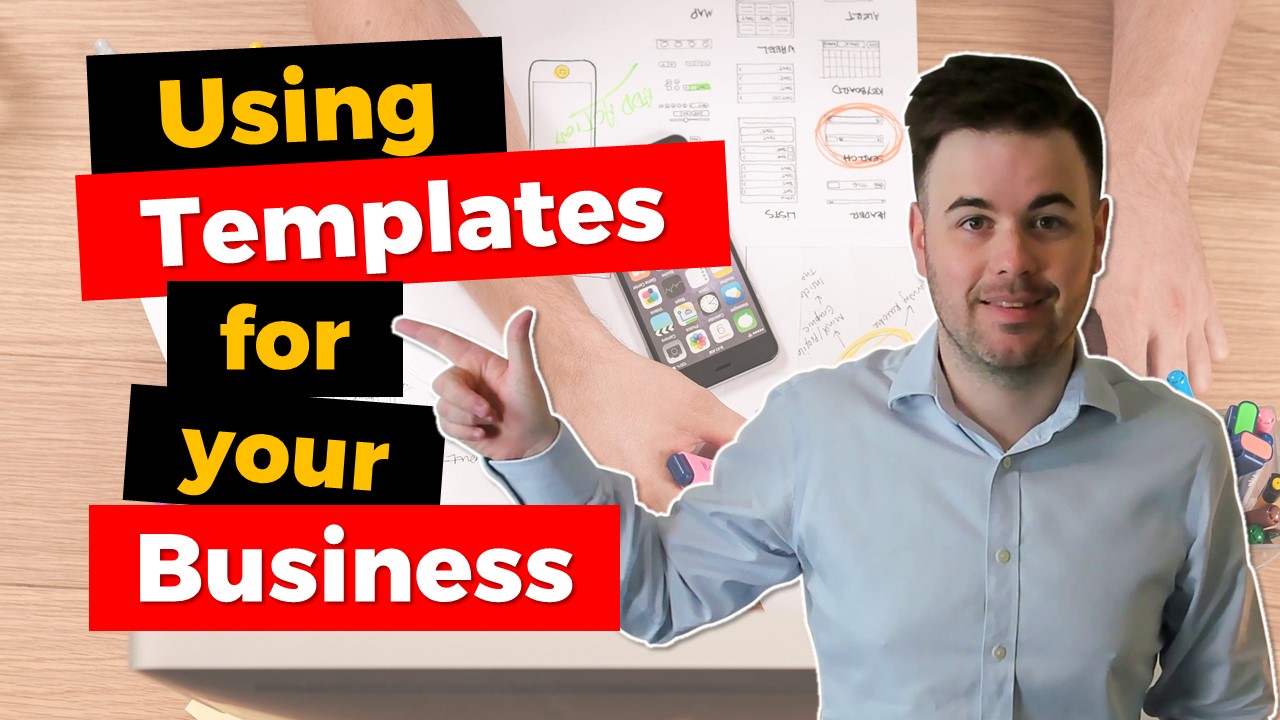Are you using templates in your business? If not, you should — they offer truly surprising benefits in terms of product adoption and user activation.
Today, I’m going to share my thoughts about an article from Theo Ohene, where he shows why templating is crucial for businesses. He also explains why this doesn’t only help clients understand what’s going on but also aids your product team to deliver faster.

Theo specifically talks about Canva, Airtable, and Miro — huge unicorns in the space that nearly everyone knows about at this point. These companies implement templates in great ways, so let’s dive in and see what they’re actually doing right.
Deeper Product Adoption and User Activation
Theo says that 7/10 of the fastest-growing SaaS companies use templates for the following reasons:
- Deeper product adoption
- Better user activation

What I want to add is that templates also help your product designers understand what the user is using — we’ll dig more into that shortly. For now, let’s look at Theo’s insights on how to make templates work.
Understanding the Jobs to be Done — Canva

When you’re designing a template, what you’re essentially doing is taking a use case for a client and making it for them. You’re building a product by building a template — you’re saying, “this is what the product can do.”
One great example of this is Canva:

When you start using Canva, the website asks what type of user you are — a large company, a small business, or an individual. Clicking on any of these choices will take you to a bunch of templates that are suitable for your needs. If you want to put this templating feature to your product, you have to understand the product’s use cases truly well.
Personalisation and User Activation— Miro
In this example, Theo cites Miro as a great platform to consider. He says that simple personalisation makes a huge differe nce, and it’s true.

Miro asks what you’re going to do, whether that’s agile workflow, diagramming, mapping, research, or strategy and planning. Instead of creating templates based on user persona like Canva, Miro offers templates based on your goals.

If you’re looking to create agile workflows, it’s going to show you templates based on agile workflow. If you’re looking for mapping and diagramming, then that’s what you’ll get from Miro.

This templating feature is powerful for shortening the time that users need to get up to speed on your product. This also ensures that testing and product design on the backend is done more quickly.
Which Team Are You On? — Airtable
Moving on, Theo tags Airtable and discusses how they segment their users and personalise their templates based on the users’ answers.

Similar to Canva and Miro, Airtable tries to niche down your experience based on your team or area of work. If you select marketing, you get a content calendar template, a marketing tracking template, and more.
That’s where personalisation takes place, and it makes onboarding very easy for users.
Designing Features Using Templates
I’m going over a comment here that I find interesting with regards to the use of templates.

Here’s why I find this one interesting: if you’re a product designer and design a template for a product, you’re essentially putting yourself in the users’ shoes. You’ll go into your product and use it. Once you’ve set up and configured what you need to do, you can then create and save the template.
However, take note: when designing a product, you sometimes think that the features in your head are going to be great, but in reality, they don’t work out that well — fortunately, templates can flush out those features that might not actually be good for your product.
If you start putting templates in place first, you can work backwards. You’ll see what features are necessary to support the template. Then, you can break user stories down from there.
The Bottom Line
Overall, using templates offers a twofold benefit to your business. First, they accelerate the onboarding process for your clients, and I highly recommend them for that purpose. Second, they help your product team focus, ensuring that they know the use cases that your users need. Moreover, they help your product achieve market adoption and get features out of the door faster. So, if you’re not using templates yet today, it’s high time you do it.




